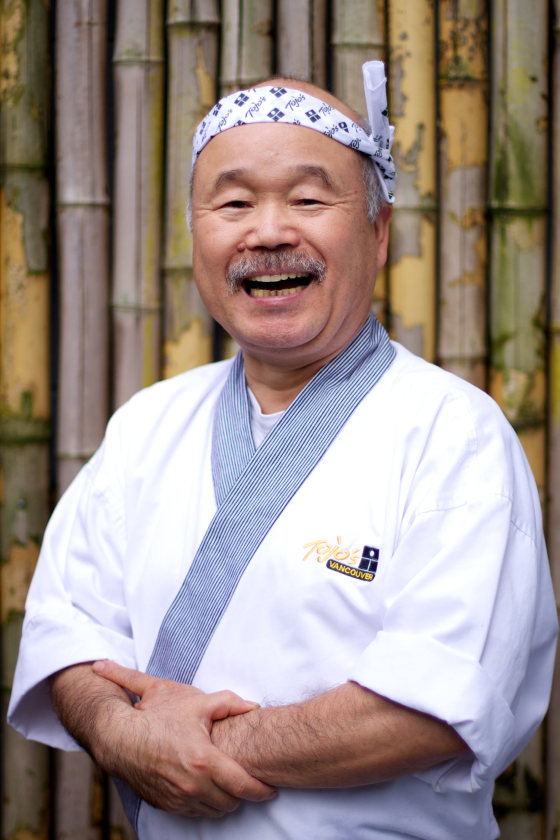
For many Americans, a California roll is their first foray into the world of sushi. Purists however have derided the fusion food as “not real sushi” — but to put it bluntly: the roll gets a bad wrap.
The California roll as it’s known today is made with a few common ingredients: avocado, cucumber and crabmeat (or imitation crabmeat) which come wrapped in seaweed and sushi rice. Sometimes finished with sesame seeds, these ingredients make a roll that has become widespread. But where did it originally come from?
Its history is a little murky: a few culinary minds have claimed credit for the West-influenced dish. Still, one thing is true: California rolls are here to stay.
Who invented the California roll?
The California roll’s origin is hotly contested, like the margarita, red beans and rice or many other foods with partially undocumented histories. And though the California roll has its naysayers due to its distinctly Americanized ingredients, the dish’s probable inventors responsible for the roll’s rise to fame, are in fact, all Japanese sushi chefs who conceived of it outside of the borders of Japan.
It’s widely believed that sushi restaurants in the States first gained traction around the late 1960s with the opening of Kawafuku Restaurant in the Little Tokyo neighborhood of Los Angeles. From there, the raw fish-based dish spread across the country much like free love and flower power did, although the meat-and-cheese palette of most Americans at the time balked at the idea of consuming raw salmon and other fresh fish.
In “American Tuna: The Rise and Fall of an Improbable Food,” author Andrew F. Smith posits two likely sources for the origin of the California roll.
U.S. & World
One is Ichiro Mashita, a Los Angeles-based sushi chef at a restaurant called Tokyo Kaikan. The story goes that along with his assistant, Teruo Imaizumi, Mashita created the California roll because the restaurant couldn’t rely on the availability and quality of fish in Los Angeles. Reportedly, the chef used avocado as a replacement for tuna and added real crab meat for a seafood flavor.
Still, some dispute this widely spread anecdote.
Get a weekly recap of the latest San Francisco Bay Area housing news. Sign up for NBC Bay Area’s Housing Deconstructed newsletter.
“This is a nice story, but it’s unlikely to be true,” Smith wrote. “By the 1960s, Los Angeles had plenty of fish markets, and tuna and other sushi fish were brought in year-round.”
Smith says a more likely claimant to the title of California roll inventor is Ken Seusa, a master sushi chef at Kin Jo on La Cienega Boulevard near Hollywood.
“Seusa had been a sushi chef at the famous Fuzsushi Rop-pongi in Tokyo; in Los Angeles, he was known for a more ‘creative type of cuisine to appeal to the sophisticated Los Angeles diner,’” Smith wrote.
Seusa was known for using all manner of non-Japanese ingredients, like hot sauce, mayonnaise, yogurt and even cream.
Smith wrote that since Seusa was credited in an Associated Press story with creating the roll, likely due to its being made with atypical sushi ingredients at the time like mayonnaise, and no one challenged the attribution or offered an alternative until more than 20 years later.
Hidekazu Tojo: the true inventor?

It’s also possible the California roll’s inventor wasn’t even in the Golden State at all.
Japanese-Canadian sushi chef Hidekazu Tojo says he is the true pioneer of the California roll, which is called Tojo Maki at his still-operating sushi spot Tojo’s Restaurant in Vancouver, Canada. When the Tojo Maki was conceived in the early 1970s, its inventor had no idea he would still be serving the dish decades later.
“Local people, they didn’t eat sushi and of course seaweed, but this is a very traditional food, long history,” Tojo tells TODAY.com. He says that while he felt limited by the traditional culinary views of Japanese culture after he moved to Canada in 1971, he was free to let his creativity loose.
Tojo says his regular North American customers at the time would come in for Japanese food, but thought seaweed looked unappetizing. Not wanting to eliminate the essential ingredient from his sushi, he says he figured out a way to hide it.
“I had an idea there: I made it inside out,” Tojo says, adding that having the rice on the outside was more palatable to his Canadian customers. He did this with the ingredients as well.
Tojo also says that in keeping with the traditional philosophy for sushi to use fresh local fish, he used Dungeness crab in his roll, and finished the dish with avocado, spinach, egg and sesame seeds. Originally called the Inside-Out roll, the dish was a hit.
So much, he says, that the roll recipe spread far and wide, losing the name Tojo and gaining the name California as it made its way throughout the States and even back to Japan. “Then, of course, many other restaurants, people say ‘this is very popular’ then it stretches all over,” he says.
The dish became so widespread that Tojo looked into registering a patent for his roll. However, recipe patents are difficult to prove, as well as expensive, so he abandoned his efforts years ago.
According to the chef, now in his seventies, all of his dishes come from his head, like his popular B.C. roll, made with barbecued salmon skin, cucumber, sesame and scallions. This, he attributes to his globetrotting nature and willingness to try new things.
“I travel a lot, maybe two, three times a year. I go through Europe, North America, Japan, when I see I like to see many different types of foods. Then my inspiration comes,” Tojo says. “After trips, I go make something new.”
Tojo says though he doesn't have a patent for the dish, he loves the impact the California roll has had on the world, as evidenced by a recent trip he took to Kyoto, Japan.
“Kyoto is very, very traditional. The kids eat in a very traditional way,” Tojo says. He laughs a little before he continues. “But they have a California roll.”
California roll: a fusion success story
When Masaharu Morimoto, acclaimed Japanese chef, restaurateur and host of Roku’s “Morimoto’s Sushi Master” first learned about California rolls, he was especially excited to see crab and avocado being used in sushi.
“It’s very reflective of the creativity and adaptability in the culinary world, and how different ingredients from diverse cultures can be combined to create something new and exciting,” Morimoto tells TODAY.com. “It also opened my eyes to the potential of combining traditional sushi with international tastes and inspired me to experiment with my own ingredients.”
Morimoto, who left Japan in 1985 to travel around the United States, now owns several restaurants around the world. From Disney World to Doha, his eateries all serve his philosophy: bridging the culinary traditions of his native Japan and the palate of the country he’s serving in. So, for him, California rolls, a fusion food, fit snugly into his menus.
“At most of my Morimoto restaurants, we serve a California roll made with snow crab, cucumber, and avocado,” Morimoto says. “At Momosan we serve California rolls using kanikama, or imitation crab, because it was a comfort food to me when I was young and a favorite memory of mine.”
Although the California roll breaks with traditional sushi philosophy, it does serve as a reminder of how enterprising immigrant chefs came into a new country and were eventually inspired — all without losing their own culture in the process.
“I have restaurants all over the world, and each one of them has its own identity within the city where we operate,” Morimoto says, adding that like every chef mentioned here, he’s very passionate about incorporating local flavor into his menus as much as possible, while still staying true to the dish being prepared.
“It’s all about bringing my own culture to the table and stirring it with the local palate,” he says.
This story first appeared on TODAY.com. More from TODAY:



